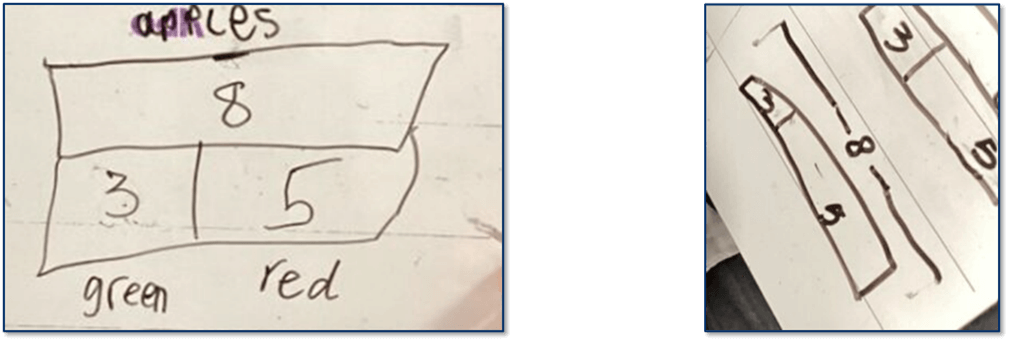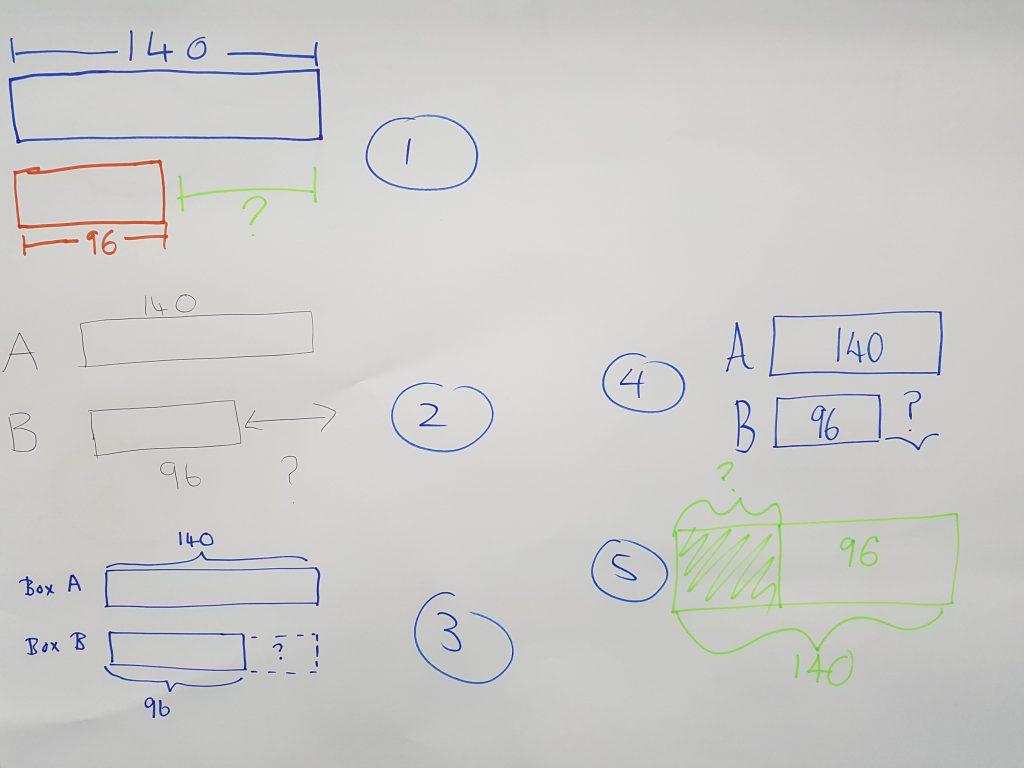Exploring Bar Design Drawing Techniques: A Comprehensive Overview to Imagining Mathematics Concepts
Bar version drawing techniques offer as a useful source for both educators and trainees in picturing mathematical ideas. These versions simplify complex mathematical partnerships, helping in the understanding of addition, reproduction, subtraction, and department. This guide describes effective approaches for carrying out bar designs, fostering active engagement and real-world links. As viewers discover the functional applications and teaching suggestions, they will discover just how these strategies can change their approach to mathematics.
Comprehending the Basics of Bar Design Drawing
Bar design attracting serves as an effective aesthetic tool in mathematics, helping with the understanding of numerical connections and analytical strategies. This strategy involves representing numbers and their connections with rectangular bars, making it easier to picture operations such as enhancement, multiplication, reduction, and division. Each bar's size matches to a certain worth, allowing learners to compare quantities and recognize percentages plainly.
To create a bar model, one begins by determining the problem's crucial elements, commonly breaking it down right into parts that can be visually stood for. In a straightforward enhancement issue, two bars can be attracted, with their sizes standing for the addends. The consolidated length highlights the sum. In enhancement, bar designs can be adjusted for extra intricate problems, consisting of proportions and fractions, by changing the bars as necessary. Understanding these fundamentals lays a solid structure for reliable problem-solving and deeper mathematical understanding.
Benefits of Utilizing Bar Versions in Mathematics
Making use of bar designs in mathematics uses numerous benefits that boost discovering and comprehension. These aesthetic depictions help pupils in comprehending complicated concepts by damaging them down into workable elements. Bar versions supply a clear structure for illustrating relationships in between numbers, making abstract concepts much more concrete. They promote a much deeper understanding of mathematical operations and promote analytic by allowing learners to imagine the data they are collaborating with.
Additionally, bar models sustain the advancement of crucial believing abilities, as pupils have to analyze and translate the aesthetic details to reason. This approach encourages energetic involvement with the product, enhancing retention and proficiency of mathematical concepts. By fostering a strong structure in visual proficiency, bar versions empower learners to come close to various mathematical difficulties with confidence. On the whole, the assimilation of bar models into maths education proves useful in growing both comprehension and analytical capabilities among trainees.
Using Bar Versions to Addition and Subtraction
Bar designs work as an efficient tool for visually representing enhancement and reduction problems. By highlighting the relationship in between numbers, they boost understanding and promote problem-solving. In addition, real-life applications of these designs can help learners grasp mathematical concepts in practical contexts.
Standing For Enhancement Aesthetically
When trainees come across enhancement and subtraction troubles, aesthetic aids can considerably boost their understanding of these procedures. Bar models act as efficient devices for standing for addition. By separating a rectangular shape into sections that correspond to the numbers entailed, trainees can visualize the partnership in between the quantities. If a student needs to add 3 and 5, they can produce a bar separated into two sections: one section representing 3 and the other standing for 5. This clear representation not only streamlines the addition procedure yet likewise enhances the concept of incorporating amounts. As students adjust these aesthetic help, they develop a much deeper understanding of enhancement, causing boosted analytical abilities and higher confidence in their mathematical abilities.
Reduction With Bar Designs
Subtraction is commonly viewed as a much more complex operation than addition, bar models can properly clarify this process for pupils. By visually representing the quantities entailed, pupils can better understand just how numbers associate to one an additional. In a bar design for subtraction, one bar stands for the total, while an additional suggests the amount being deducted. This aesthetic difference aids trainees understand the concept of "eliminating." If a bar reveals 10 systems, and an additional bar representing 4 systems is gotten rid of, students can quickly see that 6 units remain. This method not only fosters understanding of subtraction yet likewise aids in establishing problem-solving skills, allowing pupils to visualize their mathematical thinking and improve their general comprehension of mathematical principles.
Real-Life Application Examples
Comprehending subtraction through bar versions lays a structure for applying these methods in real-life circumstances. In various contexts, such as budgeting or shopping, people can visualize how much cash continues to be after expenses. For example, if an individual has $50 and spends $20, a bar version can represent the overall quantity and the invested portion, highlighting that $30 is left. Furthermore, parents can utilize bar versions to aid youngsters understand the number of even more products require to be contributed to finish a set, such as having three apples and needing 5. This graph streamlines complicated problems, helping with understanding and retention. Ultimately, bar models work as effective devices in day-to-day decision-making, improving mathematical understanding in sensible circumstances.
Imagining Multiplication and Department With Bar Models
In checking out the application of bar versions for reproduction and department, it is vital to realize their foundational principles. Constructing multiplication designs allows students to envision relationships between numbers, while reliable division techniques can be illustrated via these visual aids. This method boosts comprehension and analytic abilities in maths.
Recognizing Bar Versions
Bar designs offer as a powerful aesthetic device for highlighting the concepts of multiplication and department. They make it possible for learners to stand for mathematical relationships in a structured style, promoting a much deeper understanding of these procedures. In reproduction, bar models display groups of equal size, enabling individuals to imagine the total amount when integrating these groups. Conversely, in division, bar models assist illustrate exactly how an overall is split right into smaller, equal components, making clear the concept of dividing. By using these visual help, pupils can understand the underlying principles of multiplication and department a lot more effectively. This strategy not just improves comprehension however also sustains analytical abilities, making bar versions a vital property in mathematical education.
Creating Multiplication Models
Constructing multiplication designs utilizing bar layouts supplies a clear technique for envisioning the procedure of multiplication. These versions allow students to represent multiplication as groups of equal components, making abstract concepts much more concrete. To show (3 times 4), a student can attract one bar split into 3 equal sections, each standing for four systems. In addition, developing a 2nd bar with the exact same size reinforces the understanding of duplicated enhancement, as each section corresponds to one team. This graph not just aids in realizing multiplication however additionally improves analytic skills. By utilizing bar versions, students can much better comprehend partnerships between numbers and establish a robust foundation for extra complex mathematical ideas, causing raised confidence in their capabilities.
Picturing Division Methods

Resolving Word Troubles Utilizing Bar Design Techniques

For instance, in a trouble entailing enhancement and reduction, students can draw different bars for each and every amount and after that control them to find the remedy. This process not only clarifies the problem yet also cultivates a much deeper conceptual understanding. Bar models can be adapted for various types of word issues, making them flexible throughout different mathematical subjects. Ultimately, using bar models can substantially boost students' analytic abilities by offering a clear aesthetic path to reach the right response.
Integrating Bar Models in Different Math Topics
Bar designs can be seamlessly integrated into numerous math topics, improving trainees' understanding of principles beyond standard arithmetic. In algebra, these visual tools aid in representing formulas and inequalities, enabling learners to visualize relationships between variables. When dealing with geometry, bar versions can highlight the buildings of forms and spatial thinking, aiding students comprehend concepts like area and border properly. In stats, bar versions facilitate the interpretation of data sets, permitting students to compare amounts and acknowledge trends visually. Furthermore, incorporating bar versions within measurement topics aids in understanding units and conversions by providing a tangible representation of amounts. By employing bar versions across different mathematical areas, educators can foster a deeper comprehension of complex principles, thus improving problem-solving skills and promoting essential thinking (bar model drawing techniques). This flexibility demonstrates the utility of bar models as a fundamental device for pupils in their mathematical journey
Tips for Training Bar Versions Properly
Incorporating bar models right into teaching practices requires thoughtful methods to optimize their efficiency. Educators needs to start by introducing bar models with easy, relatable instances that students can conveniently comprehend. This assists to construct self-confidence and familiarity with the principle. Gradually increasing the intricacy of problems permits students to use their skills considerably. Furthermore, instructors ought to motivate pupils to create their very own bar models, advertising active interaction and possession of their learning.
Integrating collective activities can likewise boost understanding, as trainees talk about and address issues in teams. Constant comments is crucial; educators must give constructive discourse on pupils' bar design representations to lead enhancement. Connecting bar versions to real-life circumstances enhances their relevance, aiding pupils see the functional applications of their mathematical abilities. By applying these approaches, educators can effectively harness the power of bar designs in their maths direction.
Regularly Asked Concerns
Can Disallow Models Be Used in Other Subjects Besides Math?
Bar versions can indeed be made use of in numerous topics beyond mathematics. They successfully illustrate ideas in science, social studies, and language arts, more info helping to aesthetically represent connections, procedures, and ideas for boosted understanding across disciplines.
What Age Group Is Finest Suited for Learning Bar Versions?
Bar versions are best suited for kids ages 7 to 12, as they develop concrete thinking skills throughout this duration (bar model drawing techniques). At this age, pupils can effectively understand abstract ideas via graph and analytic methods
Are There Digital Equipment for Creating Bar Designs?

Just How Can I Assess Student Recognizing of Bar Designs?
Assessing trainee understanding of bar designs can entail quizzes, observational evaluations, and group discussions. Educators may also assess pupils' completed designs and their capacity to discuss their thinking, making sure a comprehensive evaluation of understanding.
What Prevail Mistakes When Making Use Of Bar Models?
Typical mistakes when making use of bar models include misstating amounts, falling short to accurately classify bars, confusing enhancement and subtraction, overlooking to use consistent ranges, and forgeting the value of clear visual separation between different components.
In addition, bar models can be adjusted for a lot more complex problems, consisting of portions and ratios, by adjusting the bars appropriately. Subtraction is often regarded as a much more complex operation than enhancement, bar versions can effectively clarify this process for trainees. In a bar version for subtraction, one bar represents the overall, while one more suggests the amount being subtracted. If a bar shows 10 units, and one more bar representing 4 devices is gotten rid of, students can easily see that 6 units remain. When separating a total into equal teams, pupils can draw a lengthy bar to represent the entire and after that segment it into smaller sized bars that show each team.